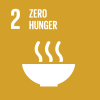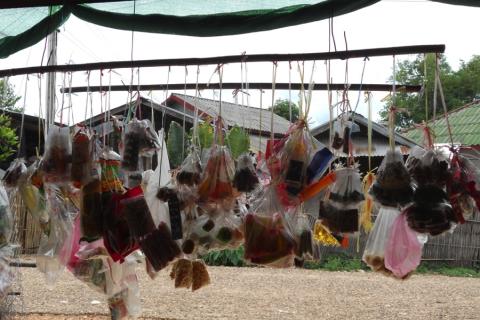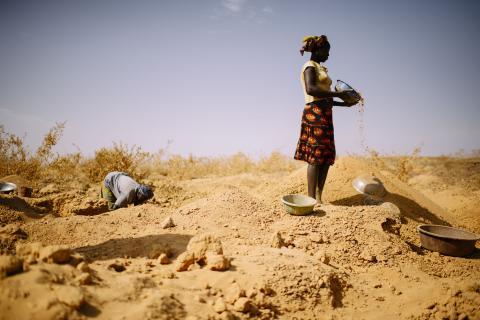
Average income of small-scale food producers, by sex and indigenous status
Last updated on 1 February 2022
This indicator is currently classified as Tier II. The Food and Agriculture Organization of the United Nations (FAO) is the main Custodian agency for this indicator in cooperation with the World Bank.
Unit of measure: Average annual income of small-scale food producers (in constant PPP 2011 USD) complemented by average income of large-scale food producers (in constant PPP 2011 USD)
Why is this indicator important?
This indicator measures the incomes of small-scale producers as a means of eliminating hunger and achieving other SDGs (e.g., poverty alleviation). Ending hunger requires long-term, sustainable food production systems and resilient agricultural practices. Developing efficient and robust food production programs to the boost agricultural productivity of small-scale producers is essential to maintain food supplies, increase incomes for poor and vulnerable groups, and feed the planet. It also contributes to strengthening rural development.
By tracking the income of small-scale producers by sex, community of reference, and enterprise size, data collected for indicator 2.3.2 enables governments to shape, prioritize, and invest in policies and measures that effectively boost agricultural productivity, drive economic growth, and eliminate hunger in particular for small-scale food producers, including women, Indigenous Peoples, family farmers, and pastoralists.
How is the indicator measured and monitored?
Data and information on income of small-scale producers is limited in many countries, but better accessible compared to the information available for indicator 2.3.1. Similarly, information is often collected at household level instead of food production unit level. The indictor can be disaggregated by sex, type of enterprise, and by community of reference.
According to the metadata brief, sources of information are either agricultural surveys, or agricultural modules in integrated household surveys (e.g., LSMS-ISA) organized by the national statistical agencies, with the necessary support from the World Bank, FAO and other international agencies. FAO has been working on computing the indicator for eight developing countries in Sub-Sahara Africa based on data collected from the Living Standards Measurement Study-Integrated Surveys on Agriculture (LSMS-ISA) surveys. Results have not been disseminated yet. In collaboration with IFAD and the World Bank, FAO also promotes the Agricultural and Rural Integrated Surveys project (AGRISurvey) which collects relevant data on an annual basis.
By Anne Hennings, peer-reviewed by FAO.
Official indicator data
The income from on-farm production activities includes income from crop production, livestock production, fisheries and aquaculture production, and from forestry production. The indicator is computed as annual income.
* Select "year" below to see the most recent data for more countries.
Other related indicators on Land Portal
In addition to the official indicator data, the following indicators provide information concerning the importance of agriculture in a given country or the distribution of land.
| Indicator | Min-Max Number of years |
Countries / Obs | Min / Max Value |
|---|---|---|---|
| Agriculture - Value Added | |||
| Employees in Agriculture - Female (% of female employment) | |||
| GDP per capita, PPP (constant 2011 international $) |
Farmers' strategies to cope with land loss
By Diana Suhardiman and Emily Koo
Laos has conceded a significant amount of land to foreign investors, with estimates placing 15% of the country’s land under foreign control. Such land concessions, or the granting of rights to land, are positioned by the government as critical to economic growth and poverty reduction.
New Alliance: Framework for Responsible Land-Based Agricultural Investments
Technical experts from G7 donors (UK, US, Germany, France), AU Land Policy Initiative and FAO have compiled a due diligence framework for land related investments based on existing standards, guidance and good practice, to support responsible investments under the New Alliance for Food Security and Nutrition.
Closing the Gender Gap for a Fairer Future
Source: Journal of Gender, Agriculture and Food Security
Written by Regina Laub and Susan Kaaria, Food and Agriculture Organization of the United Nations
Paginación
Nonfarm Income, Inequality, and Poverty in Rural Egypt and Jordan
The rural economy of developing
countries has long been regarded as synonymous with
agriculture but in recent years this view has begun to
change. Such diverse activities as government, commerce, and
services are now seen as providing most income in rural
Household Income Dynamics in Rural China
Theoretical work has shown that
nonlinear dynamics in household incomes can yield poverty
traps and distribution-dependent growth. If this is true,
the potential implications for policy are dramatic:
effective social protection from transient poverty would be
Non-Farm Diversification, Poverty, Economic Mobility and Income Inequality : A Case Study in Village India
This paper assembles data at the
all-India level and for the village of Palanpur, Uttar
Pradesh, to document the growing importance, and influence,
of the non-farm sector in the rural economy between the
early 1980s and late 2000s. The suggestion from the combined
The Gender and Equity Implications of Land-Related Investments on Labour and Income-Generating Opportunities. A Case Study of Agricultural Investments in Lao PDR
markdownabstractConcerns about the potential gender and equity implications of land-related investments on labour and
income-generating opportunities and access, use and control of land come in the context of the current
global policy interest in supporting agricultural investment in developing countries in general.
From subsistence to profit: Transforming smallholder farms
Report
Paginación
![]()

By 2030, double the agricultural productivity and incomes of small-scale food producers, in particular women, indigenous peoples, family farmers, pastoralists and fishers, including through secure and equal access to land, other productive resources and inputs, knowledge, financial services, markets and opportunities for value addition and non-farm employment
Indicator details
The indicator is conceptually clear, has an internationally established methodology and standards are available, but data is not regularly produced by countries.
Key dates:







